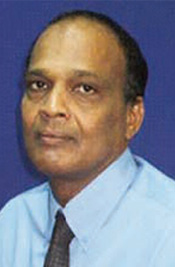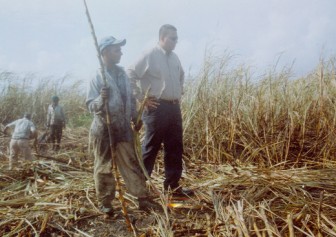Erratic rainfall patterns and shortage of capital pose perpetual threats to efforts to restore the sugar industry to a condition of viability, but the Guyana Sugar Corporation’s (GuySuCo) Board of Directors has also identified its skills’ shortage as an equally formidable hurdle to be crossed in the quest to salvage the industry.
The company’s 2009-2018 Strategic Blueprint seeks, in part, to assess “the present state of the sugar industry” and its analysis of GuySuCo’s field performance points directly to a nexus between human resource deficiencies and poor performance in the field.

The continued loss of skilled and experienced personnel, a problem which GuySuCo appears to have been unable to overcome over the years, is listed in the Strategic Blueprint as one of the factors that has impacted negatively on GuySuCo’s field operations since 2004. The sheer magnitude of the problem as expressed in the Strategic Blueprint and the impact of its consequences on the performance of the industry suggests that unless the corporation’s human resources problems are remedied, tough times will persist.
Even as the corporation seeks to push its production output this year to close to 300,000 tonnes, the Strategic Blue-print which currently guides its operations expresses concern over “the continuous flow of skilled managers out of GuySuCo,” primarily to the United States and to Canada through that country’s self-sponsorship programme for migrants.
And according to the company’s nine-year Strategic Blueprint, the rate of resignations and migration has resulted in a level of skills losses that sometimes compels the administration to promote other employees to higher positions before they are adequately equipped to assume the responsibilities associated with those positions. Noting that the loss of skills has been occurring chiefly in the areas of “agriculture and factory” the strategic blueprint says that “the rate of losses has left the corporation depleted of key skills with very few choices for replacements and promotions.” The decline in the skills levels among some categories of managers at GuySuCo has meant that the corporation has been affected by “poor decision-making in the field and factories through lack of experience and a general decline in the quality of management.”
GuySuCo says that several years before the current Strategic Blueprint came into effect it sought to respond to the problem by investing “significant resources” in the training of executives and senior staff. According to the corporation’s records more than 800 training opportunities “were utilized by executives and senior staff between 1990 and 2005. Managers and executives benefited from training in several areas including Agricultural Engineering, Infor-mation Technology and Management at the University of Guyana as well as at universities in Australia and the United Kingdom in addition to which an overseas-based consultant has been recruited to provide in-service training.
Costly investment in high-level training has, over the years, failed to consolidate the company’s human resource which has been undermined by the pattern of resignations and migration. According to the Strategic Blueprint, the corporation lost all eight of its cadets trained in Australia while only one of its four cadets trained in Agriculture Engineering and one trained in Information Technology remained in the employ of the company up to the time that the blueprint was completed. In addition to these formal training programmes, the corporation has also lost many senior managers sent on attachment to sugar factories around the world for practical training. Many of these occupied key positions in the fields and factories across the country’s operations.

Since 2006, GuySuCo has sought to respond to the flight of skills by revitalizing its Management Trainee Programme. How-ever, simultaneous efforts to attract external skilled labour have been “largely unsuccessful” as a result of the company’s inability to match rates of pay being offered by entities in the Caribbean, North America and elsewhere.
The sugar industry has had to pay a high price for its inability to retain skills at the managerial level. Three years ago, the corporation’s East Demerara report alluded to what the blueprint describes as “high levels of neglect by management in the fields. An Agriculture Auditor appointed by the previous Board of Directors had identified a number of field-related deficiencies including “instances of poorly supplied fields where problems infield are masked by good foliage on the perimeter of the fields, high instances of weeds, poor obstacle control, poor drainage and evidence of management not following set practices.” The current Board of Directors has criticized the senior management of the company for a “lack of imposition of sanctions” which it said “had created the impression of a ‘blasé attitude’ where senior estate management do not feel under pressure for poor management and a general culture of excuses is felt to have resulted.”
In establishing a direct link between management deficiencies and poor field performance the company cites a sharp decline in yields per cane age noting as well that “increasingly older canes with a greater preparation (are) being carried to older cycles in some estates.”
Interviews with senior GuySuCo officials undertaken by this newspaper over the past three weeks have confirmed that the sugar industry continues to be afflicted by these difficulties and that an unstable industrial relations climate places a further constraint on efforts to meet the production targets set by the company. One of the problems identified in the nine-year Strategic Blueprint is the propensity for “a high number of strikes” resulting in declining opportunity days. “The corporation is unable to recover the losses of sugar in these periods since strikes tend to be called in the times of good weather and optimum harvesting and tillage conditions.” Accordingly, the blueprint says, “the corporation has been faced with greatly reduced windows of opportunity for getting its field work done.”





